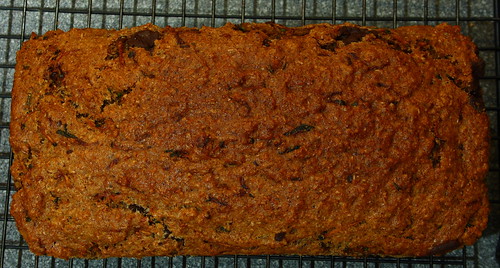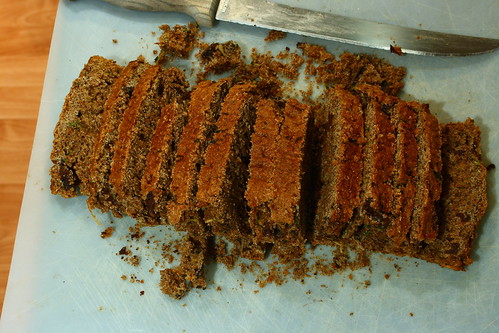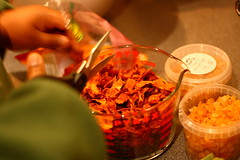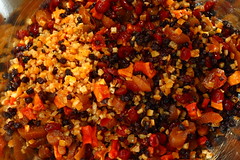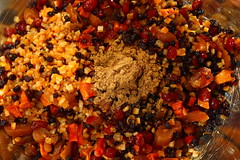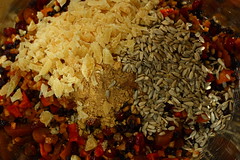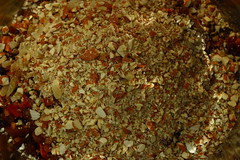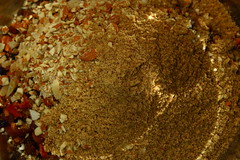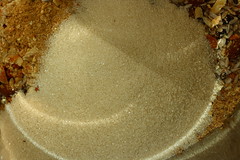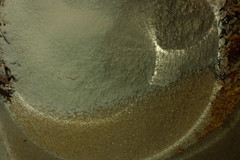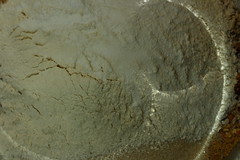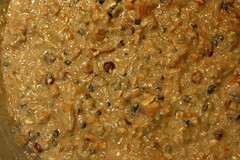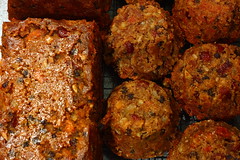…record recipes that we like on the baking site so that, when we’re in a strange kitchen far away from our ratty baking notebooks, we’ll know how what the heck we’re doing.
How bizarre. A quick check through the many breads and dishes we have on this site, and we discovered –far from home — that we had NO banana bread recipe on WIWB. None. Zero. Zilch. And we make banana bread so often that it makes no sense that we’ve never written it up!! What on earth is the matter with us?
Maybe it’s because most people have their own banana bread recipes — tried and true things they’ve had handed down from their mothers and grandmothers. Or, maybe because we’re experimental cooks, and rarely, if ever, make the same thing twice. Whatever our reasons — here’s a basic recipe that makes a really satisfying but basic banana bread. Feel free to jazz it up — adding raisins, candied ginger, citrus peels, or chocolate chips to make this loaf your very own. It’s perfect for tea or breakfast.
Here’s our most basic recipe — and it’s the lightest, most flavorful bread EVER, whether you add the two eggs or go with the flax or use yogurt in lieu of lemon juice. It’s so, so good, and we’re eating it tonight for dinner. And, eventually something else…
Basic Banana Bread
- 3/4 c. brown
- 1/4 c. white sugars (1 c. in all – I use two sugars to keep it moist)
- 2 c. flour
- 1 tsp. baking soda
- 1 Tbsp. baking powder
- 2 teaspoon freshly ground cinnamon
- 1/2 teaspoon allspice
- 1 teaspoon salt
- 3 Tbsp. flax seeds, ground, plus 6 Tbsp. water
- 1/2 c. soy milk
plus 3 tbsp. lemon juice, OR 1/2 c. plain yogurt
- 1/2 c. oil
- 4 large ripe bananas
- 1 teaspoon vanilla
- Preheat oven to 350°F/175°C
- Sift together your dry ingredients, excluding the flax seeds, because they replace eggs, and we consider them… liquid.
- In a separate bowl, cream together oil, sugars, bananas and flax/water, lemon juice, and milk. Lightly fold the banana mixture into the dry ingredients with a rubber spatula until just combined and the batter looks thick and chunky. Scrape the batter into two prepared loaf pans.
- Bake until the loaves are golden brown and a toothpick inserted into the center comes out clean — this can take from 55 minutes if you choose to make one big loaf to thirty five minutes for two small loaves, depending on your oven.
And there you have it. One classic basic banana bread recipe, just add anything.























